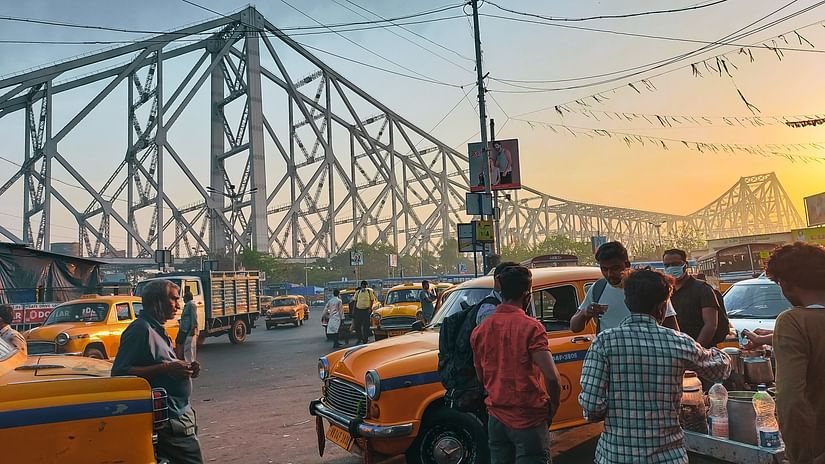History
Kolkata, formerly known as Calcutta, is a city that defies a singular description. Recognized as the Cultural Capital of India, the City of Palaces, and the City of Joy, its diversity and uniqueness are difficult to capture in a phrase.
Established in 1686, Kolkata was born out of the expansion plans of the British Raj. It evolved from the villages of Sutanati, Govindpur, and Kalikata, with its name derived from the last of these settlements. The city flourished until 1756, when the infamous "Black Hole tragedy" occurred, followed by the Battle of Plassey in 1757, which saw British victory under Robert Clive.
Kolkata became the base of justice with the establishment of the Supreme Court in 1774. The period between 1820 and 1930 witnessed the seeds of nationalism, led by figures like Rabindranath Tagore. Kolkata experienced the reverberations of the anti-partition movements, culminating in the city's renaming to Kolkata in 2001.
Today, Kolkata is a thriving metropolis, home to millions and serving as a major business, commercial and financial hub in eastern India. With a rich history, it stands as a testament to resilience and cultural vibrancy, proudly bearing the legacy of its past while embracing the dynamism of the present.
Climate
Kolkata enjoys a tropical wet and dry climate, and the ideal time to visit is from October to March. Summer (March-May) brings scorching heat, making outdoor travel uncomfortable. Winter (November to February) offers a cool climate with occasional rainfall, creating pleasant evenings. Monsoon (June to September) brings heavy showers and increased humidity, coinciding with the vibrant celebration of Kali Pooja in October. To explore Kolkata's cultural charm, the best choices are post-monsoons and winter, when the weather is mild and perfect for outdoor adventures.
Places of Interest

Victoria Memorial Hall
The magnificent Victoria Memorial Hall in Kolkata, originally established in 1921, is a captivating museum that transports visitors to the realm of history. Designed by Sir William Emerson, President of the British Institute of Architects, this architectural marvel showcases the photographs and sculptures of esteemed individuals who have contributed significantly to India's glory. Today, the Victoria Memorial stands tall at 184 ft on a sprawling 64-acre land, serving as one of Kolkata's finest art museums. Adorned with awe-inspiring figures representing prudence, learning, and motherhood, it is a testament to the city's rich heritage.

Eden Gardens
Eden Gardens, located in Kolkata, India, is a prominent tourist attraction and a beloved symbol of the city's joyous spirit. Primarily a cricket stadium, it holds the historical legacy of Indian cricket. As the country's oldest and finest cricket ground, it traces its origins back to the establishment of the Calcutta Eden Gardens Cricket Club in 1864. In February 1987, it hosted its first ODI match. With extensive modernization, Eden Gardens now boasts a capacity of approximately 120,000 spectators, making it a must-visit destination for sports enthusiasts and visitors alike.

Howrah Bridge
The iconic Howrah Bridge, spanning the Hoogli River in West Bengal, India, holds the distinction of being the world's busiest bridge. Linking the cities of Howrah and Kolkata, it derives its name from this connection. Erected in 1874, the bridge, also known as Rabindra Setu, soars atop two towering 270-foot pillars. Notably, this cantilever truss bridge was ingeniously assembled without the use of nuts and bolts. While it previously accommodated a tram route, it primarily serves as a vital road link today. Adding to its significance, Howrah Bridge has two sibling structures: Vidyasagar Setu and Vivekananda Setu, located at different points along the Hoogli River. As an enduring symbol of Kolkata, it captures the city's essence and heritage.

Dakshineshwar Kali Temple
The Dakshineswar Kali Temple is a renowned Hindu temple located in Kolkata, West Bengal, India. Built in 1855 by Rani Rashmoni, it is dedicated to Goddess Kali, the fierce embodiment of divine power. This temple complex is known for its architectural grandeur and serene surroundings, situated on the eastern bank of the Hooghly River. The main temple structure is a beautiful nine-spired edifice, attracting devotees and tourists alike. The temple is also famous for its association with Ramakrishna Paramahamsa, a revered saint and spiritual leader. Pilgrims visit this sacred site to seek blessings, experience devotion, and immerse themselves in the spiritual ambience it offers.